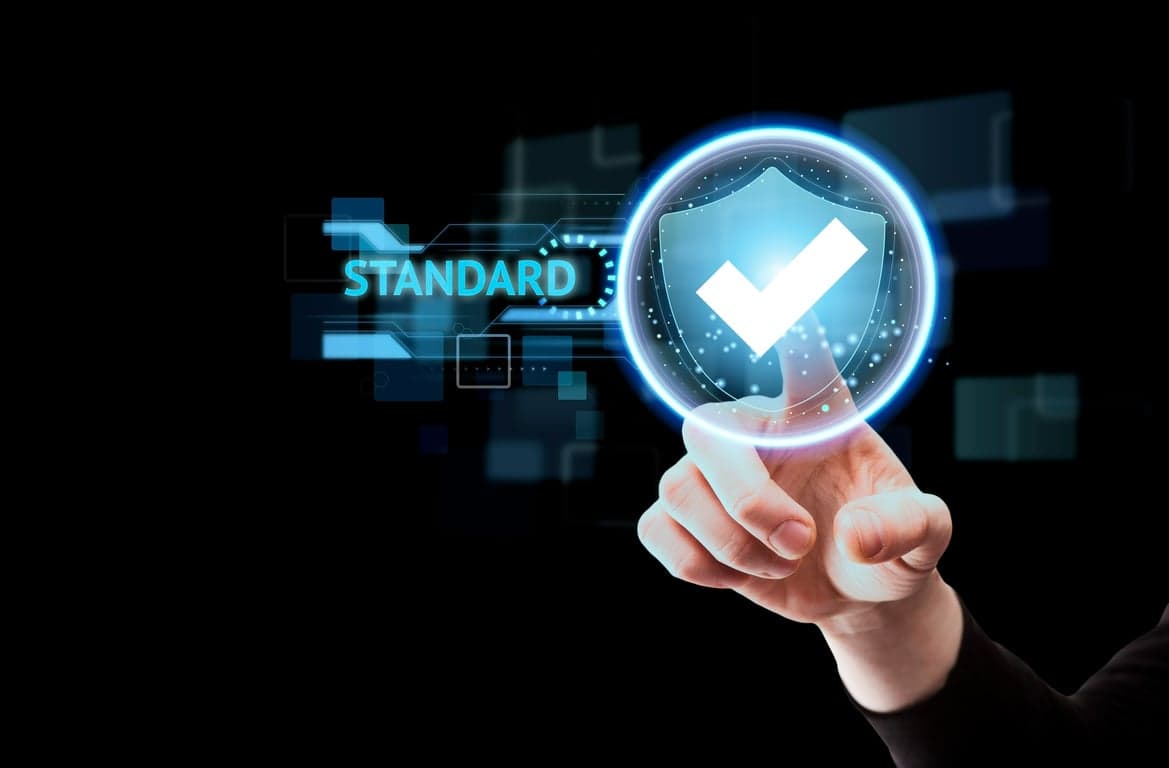 You know that moment when you're working on a huge project, and you need one tiny piece of information from a totally different team? Well, blockchains have that same problem. They're amazing at what they do, but they live in a little bubble and can't see the real world outside their network. This is known as the "blockchain oracle problem."
You know that moment when you're working on a huge project, and you need one tiny piece of information from a totally different team? Well, blockchains have that same problem. They're amazing at what they do, but they live in a little bubble and can't see the real world outside their network. This is known as the "blockchain oracle problem."
Now, imagine the U.S. government, more specifically the Department of Commerce (DOC), has just opened up its huge library of economic data for everyone to see. Not on a website, but on a blockchain. This is exactly what’s happening, thanks to a new initiative where the Bureau of Economic Analysis (BEA) is publishing data through decentralized oracle networks, Chainlink and Pyth.
Let's dive into this game-changing partnership and explore how bringing official government data on-chain is creating a new era of transparency and innovation.
What does it mean to bring government data on-chain?
When we talk about bringing government data on-chain, we mean taking official information from the U.S. government's BEA and securely publishing it directly onto a public blockchain. This includes six critical economic stats:
Real GDP — Level: Measures the total value of goods and services produced in the U.S., adjusted for inflation (billions, chained 2017 USD). Shows the real size of the economy.
Real GDP — Percent Change: Quarter-over-quarter growth at an annualized rate. Indicates whether the economy is expanding or contracting in real terms.
PCE Price Index — Level: Tracks the overall price changes of domestic consumer goods and services (2017=100). A key gauge of inflation and consumer behavior trends.
PCE Price Index — Percent Change: Quarter-over-quarter annualized change in the PCE Price Index. Shows the speed of consumer price inflation in the economy.
Real Final Sales to Private Domestic Purchasers — Level: Total value of goods sold to the U.S. market, adjusted for inflation (billions, chained 2017 USD). Reflects domestic economic activity and demand.
Real Final Sales to Private Domestic Purchasers — Percent Change: Quarter-over-quarter annualized change. Indicates the underlying strength of private consumption and investment.
In the past, to get this data, a developer would have to go to a government website or use a financial data provider. The data would be centralized. This means it could potentially be changed or tampered with.
Imagine a team of people (the BEA) collects important numbers about the economy and puts them in a special vault. Now, a digital helper (Chainlink) is taking those numbers, making a tamper-proof copy, and placing it on a huge public chalkboard (a blockchain) where everyone can see it and verify that it’s real. This copy can't be erased or changed later.
Benefits of on-chain macroeconomic data for businesses
Putting government data on a blockchain is a huge deal for businesses and developers. It moves this critical information from traditional, siloed databases to a globally accessible, transparent network.
This change unlocks powerful new possibilities. For example, a decentralized finance (DeFi) platform could create an inflation-linked financial product. This product would automatically adjust interest rates based on the official, on-chain PCE Price Index. This removes the need for a third party to manually update the numbers. It makes the entire system more trustworthy and efficient.
Imagine a loan that automatically becomes cheaper to pay off when the economy is in a bad spot. Or a digital contract that pays you more if inflation goes up. All of these things are now possible because the contract can see and trust the government’s data directly, without anyone having to type in the numbers.
Role of Chainlink oracles in government blockchain adoption
This is where Chainlink comes in. Blockchains can't connect to the internet to get data on their own. They need a special tool called an oracle. An oracle is a secure digital bridge that connects a blockchain to the outside world.
Chainlink is a decentralized oracle network. Instead of relying on a single source, it uses many independent nodes to retrieve and verify data. This creates a secure and reliable data feed that can't be tampered with.
For this project, Chainlink acts as the trusted bridge. It takes the official macroeconomic data from the U.S. government and delivers it securely onto various blockchain protocols, including Ethereum, Arbitrum, Base, Avalanche, Optimism, and ZKsync. This ensures the data remains accurate and available for any application that needs it.
Think of a blockchain as a computer that can't use the internet. An oracle is like a tiny, trustworthy robot that goes to a website (like the BEA's), grabs the right numbers, and then delivers them to the blockchain. Because Chainlink uses many different robots, you can be sure the numbers are correct and no one is lying.
A Parallel Effort: Pyth also brings government data on-chain
While Chainlink’s role is a major milestone, it’s important to know that they are not the only ones working to solve this problem. Another leading oracle network, Pyth, was also selected to bring U.S. government economic data on-chain.
Pyth will initially provide quarterly data releases for Real GDP, going back five years. They also plan to expand this initiative to include other economic datasets over time. This shows a broader industry-wide push to make high-quality, real-world data accessible to everyone on a blockchain.
If Chainlink is a trustworthy protocol bringing data from the U.S. government to the public chalkboard, Pyth is another one. The more networks that are doing this, the more confident we can be that the data is accurate and reliable.
U.S. government blockchain use cases beyond crypto
While this news is a huge step for the crypto world, it's part of a bigger trend of government adoption of blockchain technology. Beyond the BEA’s economic data initiative, U.S. officials are also researching how blockchain could improve supply chain management, voting systems, and public records. By using blockchain, they can create systems that are more transparent and tamper-resistant, making government processes more efficient and accountable.
Imagine a public record, like a birth certificate, that exists on a blockchain. It would be impossible for someone to fake it or change it, making it much safer. The government is starting to see that this technology can be used for many things besides just money.
Future of public sector data on blockchain
This initiative is a major milestone. It's the first time a major G7 economy has used a public blockchain to distribute official economic statistics. It sets a new standard for transparency and opens the door for other government agencies to follow suit.
Imagine a future where public sector data, from climate reports to census data, is all available on a blockchain. This would give developers, researchers, and citizens instant, verifiable access to the information they need, creating a more transparent and open world. The Chainlink government data partnership is just the beginning of this transformation.
This is the first time a country like the U.S. is using this technology for something so important. It's like the first time a bank used a computer instead of a typewriter. It shows everyone that this technology is real and trustworthy. Soon, other government departments might put all their information on a blockchain, making everything more transparent for everyone.
Q&A: Your Questions Answered
Q: How does this partnership actually make the U.S. government data more reliable?
This partnership introduces a new layer of security by making the data immutable, or unchangeable. While the initial data still comes from a centralized source (the BEA), once Chainlink places it on the blockchain, it cannot be altered. This creates a permanent, verifiable record that can be publicly checked against the original source, ensuring that the data hasn't been changed after its release. This is a powerful new tool for ensuring public accountability and data integrity.
Q: Why were Chainlink and Pyth chosen for this partnership over other blockchain protocols?
Chainlink is considered the industry standard for secure data transfer between the real world and blockchains, and Pyth is a leader in providing high-quality financial data. Both networks were selected for this initiative because of their proven track records and robust security measures. Chainlink has enabled trillions of dollars in on-chain transaction value for major financial institutions and protocols, while Pyth has specialized in delivering precise, time-sensitive market and economic data. Together, they ensure that government data is distributed in a secure, decentralized, and reliable way.
Q: Can this data be used to create financial products beyond what's mentioned in the article?
Yes, absolutely. The article mentions inflation-linked products, but the possibilities are vast. For example, a decentralized application could create an investment product that automatically rebalances its portfolio based on changes in GDP. Smart contracts could also be used in insurance to automatically trigger payouts for farmers in a region if on-chain agricultural data confirms a crop failure. The goal is to build a new financial system that is more responsive and transparent.
Q: How can I access and use this on-chain data myself?
Developers can access this data by integrating their applications with Chainlink's Data Feeds, which live on various blockchains like Ethereum and ZKsync. The data is available through smart contracts on the blockchain, so a user would need to understand how to interact with these contracts. This makes the data accessible to anyone with an internet connection, removing the need to go through traditional, centralized data providers.
Q: What about people who are not developers. Will we have access to this data?
You don't need to be a developer to benefit from this! The on-chain data itself is the secure foundation, but developers and companies will likely build user-friendly tools on top of it. Consider this comparison: You don't need to know how a bank's database works to check your balance. You just use their mobile app. In the same way, everyday people will be able to access this data through public, transparent dashboards, simple websites, or even new types of financial apps that are built to display this information in an easy-to-understand way.
Key Takeaways
Bridging the Gap: Blockchains are isolated from the real world. This project solves the "oracle problem" by creating a secure bridge to bring off-chain data (like government economic reports) on-chain.
Government Adopts Blockchain: The U.S. government, specifically the Bureau of Economic Analysis (BEA), has tasked Chainlink and Pyth to publish official data like GDP and inflation rates directly onto a blockchain.
A New Standard for Transparency: Once this data is on-chain, it is immutable (cannot be changed). This creates a new level of public accountability and data integrity that is more transparent than traditional, centralized databases.
It's a Growing Trend: This is not a one-off event. Other major oracle networks like Pyth are also engaged in similar efforts, signaling a broader industry push to bring reliable, real-world data to blockchain ecosystems.
Unlocking New Possibilities: Making this data accessible to developers and businesses allows for the creation of new financial products, transparent applications, and a more data-driven on-chain economy.
Join the Conversation
Share your thoughts: What other types of government data would you like to see on a blockchain? Leave a comment below!
Further Reading
Cyfrin Glossary Explainer: What is a blockchain oracle? - by Charlie J
Pyth Network Blog Post: The U.S. Department of Commerce is Working with Pyth Network to Verify & Distribute Economic Data Onchain
Chainlink Blog Post: The U.S. Department of Commerce and Chainlink Are Now Bringing Government Macroeconomic Data Onchain



